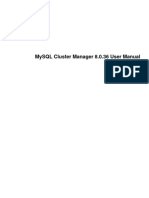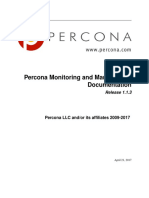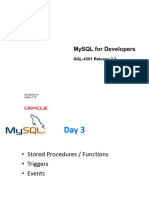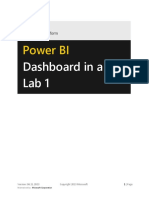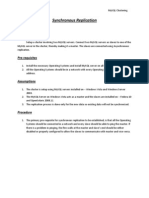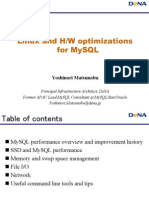0% found this document useful (0 votes)
108 views7 pagesMySQL Engine Os 44
The document discusses storage engines in MySQL, describing how MySQL uses a pluggable storage engine architecture that allows different engines like MyISAM and InnoDB to be loaded and unloaded. It provides information on setting the storage engine when creating or altering tables and compares advantages and disadvantages of the MyISAM and InnoDB engines.
Uploaded by
Mostafa RoshdyCopyright
© © All Rights Reserved
We take content rights seriously. If you suspect this is your content, claim it here.
Available Formats
Download as PPTX, PDF, TXT or read online on Scribd
0% found this document useful (0 votes)
108 views7 pagesMySQL Engine Os 44
The document discusses storage engines in MySQL, describing how MySQL uses a pluggable storage engine architecture that allows different engines like MyISAM and InnoDB to be loaded and unloaded. It provides information on setting the storage engine when creating or altering tables and compares advantages and disadvantages of the MyISAM and InnoDB engines.
Uploaded by
Mostafa RoshdyCopyright
© © All Rights Reserved
We take content rights seriously. If you suspect this is your content, claim it here.
Available Formats
Download as PPTX, PDF, TXT or read online on Scribd
/ 7



